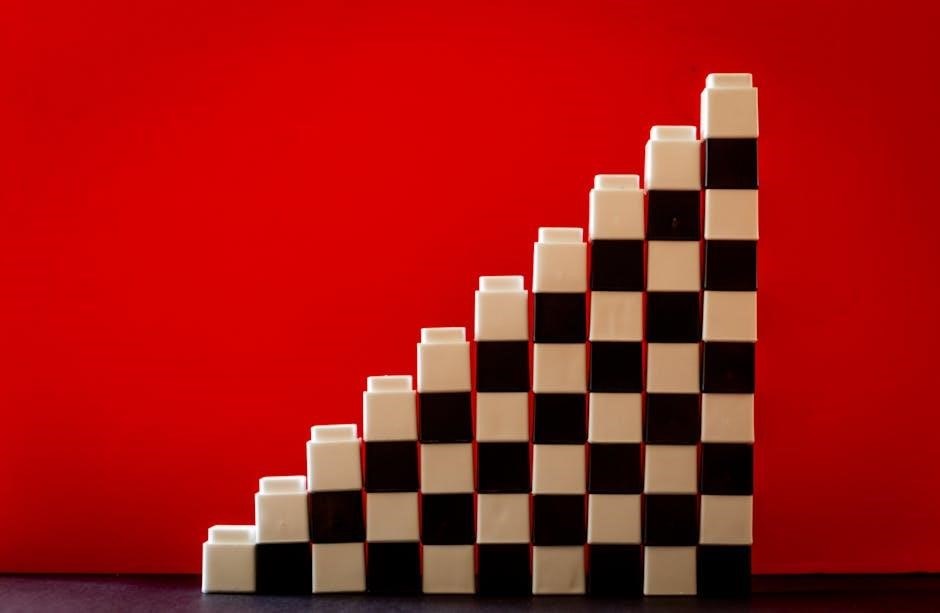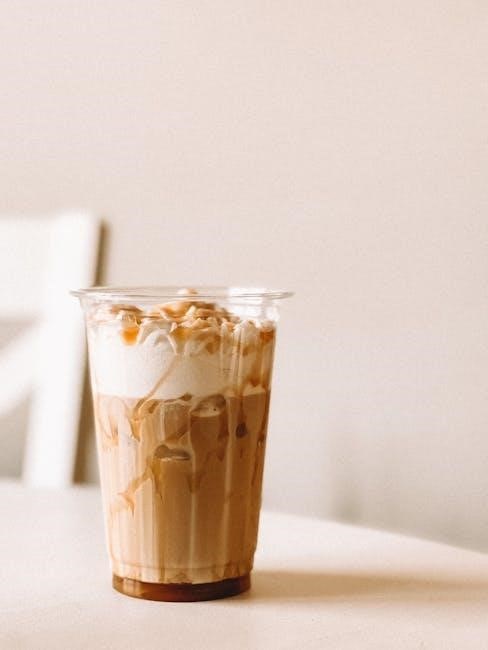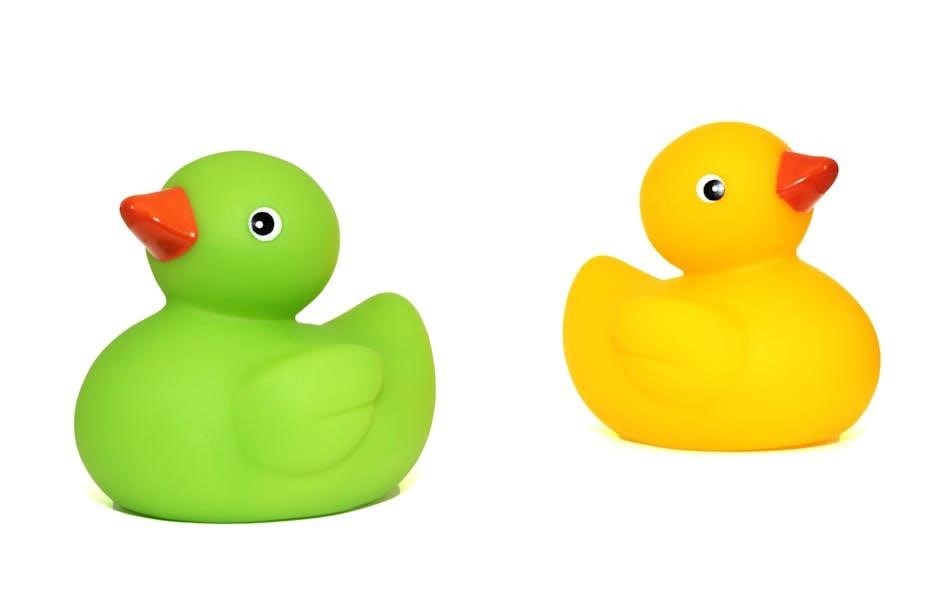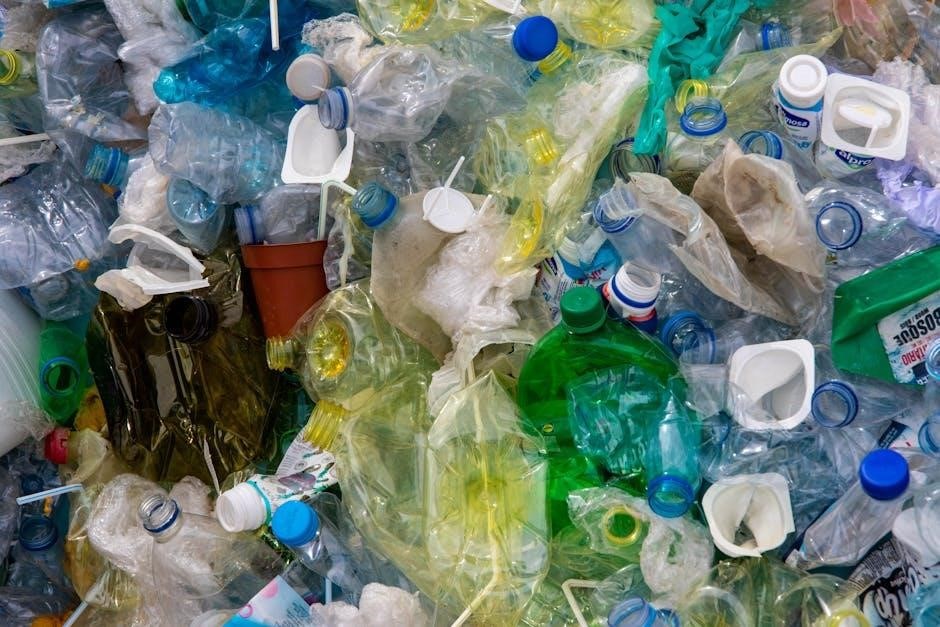J-B Weld Plastic Bonder is a two-part urethane adhesive designed for strong, lasting repairs on various plastics․ It offers high tensile strength and heat resistance, ensuring durability and versatility in plastic repair projects, making it a reliable choice for both professionals and DIY enthusiasts alike․
1․1 Overview of JB Weld Plastic Bonder
J-B Weld Plastic Bonder is a two-part urethane adhesive system designed for durable plastic repairs․ It works on thermoset plastics, carbon fiber, and more, offering a quick-setting formula that creates strong, long-lasting bonds․ Ideal for professionals and DIY projects, this adhesive ensures reliable results for various plastic repair needs․
1․2 Importance of Proper Instructions for Effective Repair
Proper instructions are crucial for achieving a strong, durable bond with JB Weld Plastic Bonder․ Following the steps ensures the adhesive sets correctly, reaching full strength and preventing repair failures․ Ignoring instructions can lead to weak bonds or improper curing, resulting in ineffective repairs․ Adhering to guidelines ensures a professional, long-lasting result․

Key Features and Benefits of JB Weld Plastic Bonder
J-B Weld Plastic Bonder offers high tensile strength, heat resistance up to 550°F, and compatibility with various plastics․ It provides durable, long-lasting repairs and is suitable for both professionals and DIY projects, making it a versatile solution for plastic restoration needs․
2․1 High Tensile Strength and Durability
High Tensile Strength and Durability are hallmark features of JB Weld Plastic Bonder․ With a tensile strength of 5020 PSI, it ensures robust and long-lasting repairs․ The adhesive forms a hard, durable bond that resists wear and tear, making it ideal for demanding applications and providing reliable results for both professional and DIY plastic repair projects․
2․2 Compatibility with Various Plastic Types
J-B Weld Plastic Bonder is compatible with a wide range of plastic types, including ABS, PVC, polypropylene, and polyethylene․ It also works effectively on thermoset plastics, carbon fiber, and other composite materials․ This versatility makes it suitable for repairing hard plastics, flexible plastics, and even bonding plastic to metal or other materials seamlessly․
2․3 Heat Resistance and Weatherproofing
J-B Weld Plastic Bonder offers excellent heat resistance, withstanding temperatures up to 550°F when fully cured․ Its weatherproofing properties make it ideal for outdoor repairs and exposure to harsh conditions․ This durability ensures long-lasting bonds in high-temperature environments, making it a reliable choice for repairs requiring thermal stability and resistance to environmental factors․

Surface Preparation for Optimal Bonding
Proper surface preparation is crucial for strong bonds․ Clean the plastic thoroughly with a solvent, lightly sand the area for better adhesion, and ensure it’s completely dry before applying the adhesive․
3;1 Cleaning the Plastic Surface
Cleaning the plastic surface is essential for optimal bonding․ Remove grease, oils, and contaminants using a solvent like isopropyl alcohol․ Ensure the surface is free from dirt and debris to promote proper adhesion․ Avoid using harsh chemicals that might damage the plastic․ A clean surface ensures a strong and durable bond with the adhesive․
3․2 Roughening the Surface for Better Adhesion
Roughening the plastic surface enhances adhesion․ Use medium-grit sandpaper (120-200 grit) to lightly scratch the area․ This creates a textured surface for the adhesive to bond with․ Avoid excessive force to prevent damage․ Remove any dust or debris after sanding to ensure a clean, strong bond between the plastic and the adhesive․
3․3 Drying the Surface Completely
Ensure the plastic surface is entirely dry before applying the adhesive․ Use a clean, lint-free cloth to wipe away any moisture or contaminants․ Allow the surface to air dry completely, as any residue or dampness can weaken the bond․ A dry surface ensures optimal adhesion and a strong, durable repair with JB Weld Plastic Bonder․

Application Instructions for JB Weld Plastic Bonder
Apply the mixed adhesive evenly to the prepared plastic surface, following the instructions for optimal coverage․ Allow the adhesive to set as directed for a strong, lasting bond and smooth repair results․
4․1 Materials Needed for Application
To apply JB Weld Plastic Bonder, you’ll need the following materials: the Plastic Bonder syringe, a clean mixing surface, a stir stick, gloves, safety goggles, and sandpaper for surface preparation․ Ensure all items are ready to streamline the repair process and achieve the best results with the adhesive․
4․2 Mixing the Two-Part Adhesive System
Dispense equal amounts of the resin and hardener onto a clean mixing surface․ Use the provided mixing stick to blend thoroughly until a uniform color is achieved․ Mix for about 30 seconds to ensure proper activation․ Avoid over-mixing, as this can introduce air bubbles․ The mixture is ready when streaks disappear, ensuring a strong bond․
4․3 Applying the Adhesive to the Plastic Surface
Apply the mixed adhesive evenly to the prepared plastic surface using a brush or putty knife․ Press firmly to ensure full contact and eliminate air bubbles․ Spread thinly, covering the entire repair area․ Avoid over-application, as this can lead to uneven drying․ The adhesive begins setting within 5 minutes, so work quickly for best results․
Curing and Drying Times
J-B Weld Plastic Bonder typically cures within 15-24 hours, reaching full strength after 24 hours․ Allow the adhesive to cure in a well-ventilated area at room temperature for optimal results․
5․1 Understanding the Curing Process
The curing process begins immediately after mixing the two-part adhesive․ It hardens within 15-24 hours, depending on environmental conditions․ Full strength is achieved after 24 hours, forming a durable bond․ Ensure the repaired area remains undisturbed during this time for optimal results․
5․2 Recommended Drying Time for Full Strength
The recommended drying time for JB Weld Plastic Bonder to achieve full strength is 24 hours․ This allows the adhesive to cure completely, ensuring maximum bond strength․ Environmental factors like temperature and humidity may influence drying time, so ideal conditions are 70°F to 80°F (21°C to 27°C) with low humidity․
5․3 Factors Affecting Curing Time
Temperature, humidity, and application thickness significantly impact curing time․ Higher temperatures accelerate the process, while lower temperatures slow it down․ Excessive humidity can delay curing by preventing proper evaporation․ Thicker layers of adhesive also require more time to cure completely compared to thinner applications․
Post-Curing Steps for a Professional Finish
Post-curing steps enhance the repair’s durability and appearance․ Sanding smooths the surface, painting adds protection, and inspection ensures quality, resulting in a professional finish․
6․1 Sanding the Repaired Area
Sanding is crucial for a smooth finish․ Use medium-grit sandpaper to feather the edges, blending the repair with the surrounding surface․ Progress to fine-grit for polishing․ Avoid excessive pressure to prevent damage․ Sanding ensures evenness and prepares the area for painting or sealing, achieving a seamless and professional-looking repair․
6․2 Painting or Sealing the Repaired Surface
After sanding, apply a primer suitable for plastics to ensure paint adhesion․ Use a high-quality plastic-specific paint or clear sealant to protect the repaired area․ Allow the paint or sealant to dry completely according to the manufacturer’s instructions․ This step enhances durability and blends the repair seamlessly with the original surface․
6․3 Final Inspection and Testing
After curing, inspect the repaired area for any defects or inconsistencies․ Test the bond strength by gently applying pressure or stress to ensure it holds firmly․ Check for a smooth, even surface and verify that the repair can withstand normal use or stress․ This ensures the repair meets desired strength and durability standards․
Safety Precautions and Best Practices
Wear gloves and goggles to protect against skin and eye irritation․ Work in a well-ventilated area to avoid inhaling fumes․ Avoid skin contact with the adhesive․ Use tools to mix and apply the product to prevent exposure․ Follow all instructions carefully to ensure safe and effective results․
7․1 Personal Protective Equipment (PPE)
Wear gloves, goggles, and a face mask to avoid skin contact and inhalation of fumes․ Protective eyewear and long sleeves minimize exposure risks․ Ensure proper ventilation to prevent respiratory irritation․ Keep the work area away from open flames or sparks to avoid fire hazards․ Always follow PPE guidelines for safe application․
7․2 Working in a Well-Ventilated Area
Work in a well-ventilated area to avoid inhaling fumes from the adhesive․ Open windows or use fans to ensure good airflow․ Proper ventilation reduces respiratory irritation and prevents the buildup of harmful vapors․ Avoid working in confined or poorly aired spaces to maintain a safe environment during application and curing․
7․3 Avoiding Common Mistakes
Ensure proper mixing of the two parts in the correct ratio to achieve optimal bonding․ Avoid applying the adhesive to unprepared or dirty surfaces, as this reduces effectiveness․ Do not skip the curing time, as premature use can weaken the bond․ Always follow instructions to achieve a strong, long-lasting repair․

Troubleshooting Common Issues
Troubleshooting common issues with JB Weld Plastic Bonder involves addressing problems like uneven application, weak bond strength, or adhesive not setting properly․ These issues can often be resolved by ensuring proper surface preparation, correct mixing, and following the recommended curing time․
8․1 Adhesive Not Setting Properly
If JB Weld Plastic Bonder isn’t setting properly, check the mix ratio, ensure surfaces are clean and dry, and verify curing conditions․ Inadequate mixing or incorrect proportions can prevent proper bonding․ Environmental factors like temperature and humidity may also slow or prevent curing․ Allow the recommended 15-24 hours for full curing․
8․2 Weak Bond Strength After Curing
A weak bond after curing may result from improper surface preparation, insufficient adhesive application, or incorrect mixing ratios․ Ensure the plastic is clean, dry, and properly roughened․ Verify the mix is even and applied thoroughly․ Environmental factors like temperature and humidity can also impact strength․ Follow instructions carefully for optimal results․
8․3 Bubbles or Uneven Application
Bubbles or uneven application can occur due to improper mixing or excessive adhesive use․ Ensure the adhesive is mixed thoroughly and applied in thin, even layers․ Avoid overfilling, as this can trap air․ Use the provided mixing tray and stick for precise application․ Work in a well-ventilated area to minimize bubble formation․
Comparing JB Weld Plastic Bonder with Other Adhesives
J-B Weld Plastic Bonder offers superior strength and flexibility compared to super glue and epoxy, making it ideal for plastic repairs․ Its two-part urethane system ensures durable, long-lasting bonds on various materials, while its heat resistance and versatility set it apart from other adhesives in the market․
9․1 Advantages Over Super Glue
J-B Weld Plastic Bonder surpasses super glue in strength and flexibility, offering a durable bond that withstands heat and stress․ Unlike super glue, it provides high tensile strength and works on various plastics, making it ideal for heavy-duty repairs where super glue would fail․ Its two-part system ensures a long-lasting, reliable fix․
9․2 Comparison with Epoxy-Based Adhesives
J-B Weld Plastic Bonder excels in flexibility and quick-setting compared to epoxy-based adhesives․ While epoxy is strong, JB Weld offers better adhesion to plastics, including thermoset materials, and cures faster, making it ideal for plastic repairs․ Its two-part urethane system ensures a durable bond without the lengthy curing times of traditional epoxy adhesives․
9․3 When to Choose JB Weld Plastic Bonder
Choose JB Weld Plastic Bonder for strong, flexible bonds on thermoset and thermoplastic materials․ Ideal for repairs requiring high tensile strength, heat resistance, and quick setting․ Use it for automotive parts, household items, or outdoor applications where durability and weatherproofing are essential․ Its versatility makes it perfect for bonding plastic to metal or other materials effectively․
Tips for Specific Plastic Repair Scenarios
J-B Weld Plastic Bonder excels in various repair scenarios, offering tailored solutions for hard plastics, flexible materials, and bonding plastic to metal or other surfaces effectively․
10․1 Repairing Hard Plastics
J-B Weld Plastic Bonder is ideal for repairing hard plastics, offering exceptional tensile strength of 5020 PSI․ Ensure surfaces are clean and roughened for optimal adhesion․ Apply the adhesive evenly, allowing it to cure fully for 15-24 hours․ Sanding the repaired area ensures a smooth finish, making it nearly indistinguishable from the original surface․
10․2 Fixing Flexible or Thermoset Plastics
J-B Weld Plastic Bonder excels at repairing flexible and thermoset plastics, forming a durable, flexible bond․ Clean and roughen surfaces thoroughly before applying the adhesive․ Allow 15-24 hours for full curing․ The product’s versatility ensures long-lasting repairs, even on materials prone to bending or exposure to heat, maintaining structural integrity effectively․
10․3 Bonding Plastic to Metal or Other Materials
J-B Weld Plastic Bonder effectively bonds plastic to metal and other materials, ensuring a strong, durable connection․ Proper surface preparation and application are key․ The adhesive cures to a high tensile strength, withstanding heat and weathering, making it ideal for mixed-material repairs that require long-lasting stability and structural integrity․
J-B Weld Plastic Bonder is a reliable solution for durable plastic repairs․ Its versatility and ease of use make it ideal for various projects, ensuring long-lasting results․
11․1 Summary of Key Takeaways
J-B Weld Plastic Bonder is a versatile, two-part urethane adhesive offering strong bonds on various plastics․ It provides high tensile strength, heat resistance, and durability․ Proper surface preparation, mixing, and curing are essential for optimal results․ Suitable for professionals and DIYers, it ensures reliable repairs for both hard and flexible plastics, making it a top choice for versatile applications․
11․2 Recommendations for Future Repairs
For future repairs, ensure proper surface preparation, including cleaning and roughening, to maximize bond strength․ Follow mixing instructions precisely and allow the adhesive to cure fully for optimal results․ Sand and paint post-curing for a professional finish․ Always work in a well-ventilated area and wear protective gear for safety and effectiveness․
11․3 Warranty and Manufacturer Support
J-B Weld Plastic Bonder is backed by a warranty ensuring product quality and performance․ The manufacturer provides reliable customer support, including troubleshooting guides and repair assistance․ For inquiries, users can contact their dedicated support team via email or visit the official website for comprehensive resources and FAQs to address any repair-related concerns effectively․
